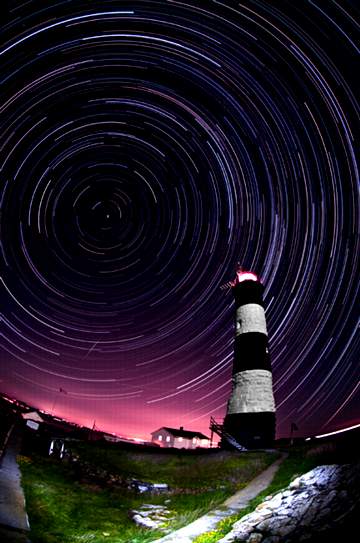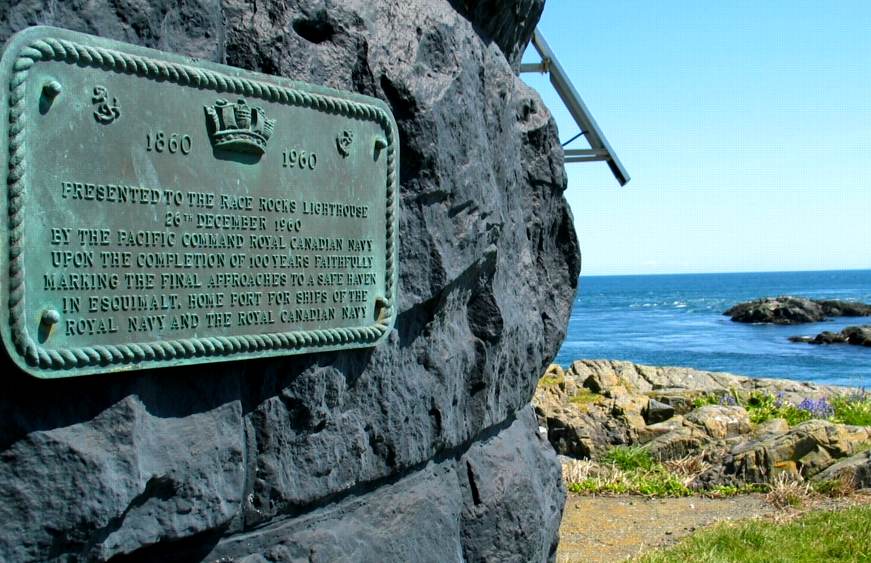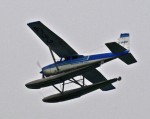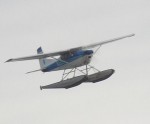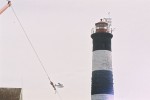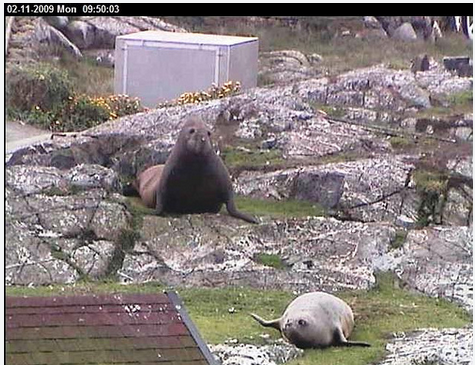
Three Elephant seals today on the island.
This is a summary of the Boat Observations by the Ecoguardians for the year 2009. It has been transferred from the old logging system, and when time is available it will be placed in the new logs. GF
‘2009-02-07’, ‘Pleasure’, 1, ’35ft cabin cruiser with 4 passengers at 1450hrs’, ‘Chris’, ’18:11:33′),
‘2009-02-07’, ‘Eco-Tour’, 1, ‘Prince of Whales rib\r\n10 passengers\r\nat 1550hrs\reenentered from West’, ‘Chris’, ’18:12:31′),
‘2009-02-08’, ‘Pleasure’, 1, ’24ft sailboat with 2 passengers\r\n1450hrs’, ‘Chris’, ’06:51:54′),
‘2009-02-09’, ‘Pleasure’, 2, ‘One boat sited off North rock in the afternoon was eventually taken under tow by what looks to be a coast guard vessel.. blue flashing lights. ‘, ‘Garry’, ’13:35:15′),
‘2009-02-11’, ‘Eco-Tour’, 2, ”, ‘Garry’, ’10:35:20′),
‘2009-03-25’, ‘Eco-Tour’, 5, ‘Orca Whale Adventures and Prince of Whales zodiacs completed similar tours of the reserve around 14:00 today. A third “Cetacean” aluminum boat and the PoW zodiac followed some stellars swimming in the front passage.’, ‘Ryan’, ’16:25:14′),
‘2009-04-03’, ‘Eco-Tour’, 2, ‘2 of the new Prince of Whales monster zodiacs were in the reserve at 11:00 today. The last to leave didn”t want until exiting the reserve before powering up and created significant wake here on Great Race.’, ‘Ryan’, ’11:20:52′),
‘2009-04-14’, ‘Pleasure’, 3, ‘1 small yellow-hulled pleasure craft sped through the N side of the reserve E to W.’, ‘Ryan’, ’17:02:36′),
‘2009-04-14’, ‘Eco-Tour’, 7, ‘3 infractions causing marine mammals to stampede into the water reported to Roy Osselton.’, ‘Ryan’, ’17:03:06′),
‘2009-05-16’, ‘Eco-Tour’, 7, ”, ‘Ryan’, ’13:55:41′),
‘2009-05-23’, ‘Pleasure’, 0, ”, ‘Ryan’, ’09:44:01′),
‘2009-05-27’, ‘Eco-Tour’, 22, ‘Three orca spirit boats came closer than 100m throughout the day.’, ‘Adam’, ’08:11:06′),
‘2009-05-28’, ‘Pleasure’, 1, ”, ‘Adam’, ’12:56:57′),
‘2009-05-28’, ‘Eco-Tour’, 15, ”, ‘Adam’, ’18:13:50′),
‘2009-05-29’, ‘Eco-Tour’, 10, ‘as of 14:00’, ‘Ryan’, ’13:58:45′),
‘2009-05-30’, ‘Pleasure’, 2, ‘Two pleasure boats entered the reserve today under high speed. Radio contact was made with the first and the driver replied saying he was unaware of the speed restriction. The second could not be distinguished accurately enough in order to contact on the radio.’, ‘Adam’, ’19:40:55′),
‘2009-05-30’, ‘Diving’, 2, ”, ‘Adam’, ’19:41:34′),
‘2009-05-30’, ‘Eco-Tour’, 5, ”, ‘Adam’, ’19:41:49′),
‘2009-05-31’, ‘Pleasure’, 7, ‘There were 3 speed/distance infractions: a rental boat from PB Marina and two other pleasure craft.’, ‘Adam’, ’18:26:33′),
‘2009-05-31’, ‘Fishing’, 1, ”, ‘Adam’, ’18:26:49′),
‘2009-05-31’, ‘Eco-Tour’, 17, ‘Distance infractions from: Eagle Wing Tours, unidentified company with registration # C01898BC (x2 today; many times before).’, ‘Adam’, ’18:28:23′),
‘2009-05-31’, ‘Diving’, 1, ‘Exited east through the reserve under high speed.’, ‘Adam’, ’18:29:01′),
‘2009-05-31’, ‘Kayak’, 2, ”, ‘Adam’, ’18:29:08′),
‘2009-06-01’, ‘Fishing’, 3, ”, ‘Adam’, ’14:14:44′),
‘2009-06-01’, ‘Eco-Tour’, 5, ”, ‘Adam’, ’16:53:54′),
‘2009-06-02’, ‘Fishing’, 1, ”, ‘Adam’, ’21:06:38′),
‘2009-06-02’, ‘Eco-Tour’, 24, ”, ‘Adam’, ’21:27:29′),
‘2009-06-03’, ‘Fishing’, 3, ”, ‘Adam’, ’22:39:17′),
‘2009-06-03’, ‘Pleasure’, 1, ”, ‘Adam’, ’22:39:24′),
‘2009-06-03’, ‘Eco-Tour’, 10, ”, ‘Adam’, ’22:39:33′),
‘2009-06-04’, ‘Eco-Tour’, 8, ”, ‘Adam’, ’22:02:08′),
‘2009-06-05’, ‘Eco-Tour’, 14, ”, ‘Adam’, ’19:51:13′),
‘2009-06-07’, ‘Pleasure’, 1, ”, ‘Adam’, ’18:38:09′),
‘2009-06-07’, ‘Fishing’, 1, ”, ‘Adam’, ’18:38:19′);
‘2009-06-07’, ‘Eco-Tour’, 10, ”, ‘Adam’, ’18:38:29′),
‘2009-06-09’, ‘Eco-Tour’, 15, ”, ‘Adam’, ’10:42:52′),
‘2009-06-11’, ‘Eco-Tour’, 5, ”, ‘Adam’, ’21:57:12′),
‘2009-06-13’, ‘Eco-Tour’, 8, ”, ‘Adam’, ’11:43:09′),
‘2009-06-15’, ‘Eco-Tour’, 14, ”, ‘Adam’, ’11:11:26′),
‘2009-06-21’, ‘Pleasure’, 0, ”, ‘Adam’, ’09:44:46′),
‘2009-06-21’, ‘Diving’, 0, ”, ‘Adam’, ’09:44:51′),
‘2009-06-21’, ‘Eco-Tour’, 0, ”, ‘Adam’, ’09:44:56′),
‘2009-06-20’, ‘Pleasure’, 1, ”, ‘Adam’, ’09:45:21′),
‘2009-06-20’, ‘Fishing’, 1, ”, ‘Adam’, ’09:45:26′),
‘2009-06-20’, ‘Diving’, 1, ”, ‘Adam’, ’09:45:33′),
‘2009-06-20’, ‘Eco-Tour’, 15, ”, ‘Adam’, ’09:45:41′),
‘2009-06-23’, ‘Eco-Tour’, 5, ”, ‘Adam’, ’12:22:31′),
‘2009-06-24’, ‘Eco-Tour’, 3, ”, ‘Adam’, ’17:19:48′),
‘2009-06-25’, ‘Eco-Tour’, 6, ”, ‘Adam’, ’21:37:59′),
‘2009-07-04’, ‘Diving’, 1, ”, ‘Adam’, ’18:15:39′),
‘2009-07-10’, ‘Pleasure’, 2, ”, ‘Adam’, ’08:28:47′),
‘2009-07-10’, ‘Fishing’, 2, ”, ‘Adam’, ’08:28:56′),
‘2009-07-10’, ‘Eco-Tour’, 7, ”, ‘Adam’, ’08:29:04′),
‘2009-07-15’, ‘Pleasure’, 2, ‘test of the system’, ‘Garry’, ’17:06:38′),
‘2009-07-17’, ‘Eco-Tour’, 31, ”, ‘Adam’, ’10:40:20′),
‘2009-07-17’, ‘Fishing’, 1, ”, ‘Adam’, ’10:40:29′),
‘2009-07-17’, ‘Other’, 2, ‘Hyaku and a Clean Currents boat were doing some work for the cable laying.’, ‘Adam’, ’10:41:01′),
‘2009-07-17’, ‘Pleasure’, 2, ”, ‘Adam’, ’10:41:12′),
‘2009-07-27’, ‘Eco-Tour’, 5, ”, ‘max’, ’19:27:23′),
‘2009-08-08’, ‘Pleasure’, 5, ”, ‘max’, ’18:03:14′),
‘2009-08-08’, ‘Eco-Tour’, 21, ”, ‘max’, ’18:03:27′),
‘2009-08-08’, ‘Kayak’, 2, ”, ‘max’, ’18:03:41′),
‘2009-08-08’, ‘Diving’, 1, ”, ‘max’, ’18:03:51′),
‘2009-08-09’, ‘Eco-Tour’, 3, ”, ‘max’, ’19:56:57′),
‘2009-08-10’, ‘Eco-Tour’, 2, ”, ‘max’, ’19:29:29′),
‘2009-08-11’, ‘Eco-Tour’, 4, ”, ‘Adam’, ’09:12:19′),
‘2009-08-11’, ‘Pleasure’, 6, ”, ‘Adam’, ’09:12:27′),
‘2009-08-13’, ‘Eco-Tour’, 45, ”, ‘max’, ’18:22:52′),
‘2009-08-12’, ‘Pleasure’, 2, ”, ‘Adam’, ’11:16:48′),
‘2009-08-12’, ‘Pleasure’, 25, ”, ‘Adam’, ’11:17:05′),
‘2009-08-13’, ‘Pleasure’, 5, ”, ‘Adam’, ’18:22:42′),
‘2009-08-15’, ‘Pleasure’, 10, ‘Numerous pleasure boats were seen speeding through the Reserve today, as well as several fishing just on or inside the boundaries of the reserve. ‘, ‘Adam’, ’19:56:17′),
‘2009-08-15’, ‘Eco-Tour’, 5, ‘One tour boat spotted cutting kelp so that tourists could examine it and eat it (!)’, ‘Adam’, ’19:56:50′),
‘2009-08-15’, ‘Diving’, 1, ”, ‘Adam’, ’19:56:59′),
‘2009-08-16’, ‘Pleasure’, 1, ”, ‘max’, ’19:45:23′),
‘2009-08-16’, ‘Eco-Tour’, 11, ”, ‘max’, ’19:45:32′),
‘2009-08-16’, ‘Fishing’, 12, ”, ‘max’, ’19:45:42′),
‘2009-08-17’, ‘Pleasure’, 5, ”, ‘Adam’, ’06:54:36′),
‘2009-08-17’, ‘Eco-Tour’, 3, ”, ‘Adam’, ’06:54:45′),
‘2009-08-23’, ‘Eco-Tour’, 26, ”, ‘Adam’, ’17:30:10′),
‘2009-08-25’, ‘Other’, 1, ‘Testing…’, ‘admin’, ’15:08:15′),
‘2009-08-25’, ‘Eco-Tour’, 30, ”, ‘Adam’, ’20:56:56′),
‘2009-08-26’, ‘Eco-Tour’, 30, ”, ‘Adam’, ’22:36:02′),
‘2009-09-13’, ‘Pleasure’, 1, ‘Success in contacting them as they sped through the reserve. They reduced speed and I thanked them.’, ‘Ryan’, ’10:05:47′),
‘2009-09-13’, ‘Pleasure’, 1, ‘A blue-hulled pleasure craft with 70hp Johnson sped through the reserve and ignored all hails. A Caucasian woman was at the helm and boy was her passenger.’, ‘Ryan’, ’11:13:38′),
‘2009-09-13’, ‘Eco-Tour’, 1, ‘SpringTide came through today around 11:00, pursued sea lions in the water through the kelp bed between here and North Rock and twice positioned its active props in the path of swimming sea lions.’, ‘Ryan’, ’11:14:26′),
‘2009-09-13’, ‘Eco-Tour’, 1, ‘Prince of Whales \\”The Empress\\” was in today at 11:45, and was a model of responsible and sustainable eco-tour operation in the reserve.’, ‘Ryan’, ’11:48:04′),
‘2009-09-13’, ‘Eco-Tour’, 1, ‘Sooke Coastal Explorations (C10570BC) followed shortly after \\”The Empress\\” and copied their good behaviour.’, ‘Ryan’, ’11:50:03′),
‘2009-09-13’, ‘Eco-Tour’, 1, ‘The Marauder IV a Springtide Tours boat arrived at 11:54 and made a slow pass through the channel.’, ‘Ryan’, ’11:54:57′),
‘2009-09-13’, ‘Eco-Tour’, 2, ‘MV Goldwing and an OceanExplorations.Com boat arrived at 12:15. The MV Goldwing was much more attentive to its approach this time, ”m so proud”. The OE.com boat came in fast but slowed in the channel.’, ‘Ryan’, ’12:20:30′),
‘2009-09-13’, ‘Eco-Tour’, 1, ‘Five Star SuperCat came through at 12:30, very close to Great Race as it drifted through the channel. Several basking Californians moved in from the kelp bed.’, ‘Ryan’, ’12:35:10′),
‘2009-09-13’, ‘Eco-Tour’, 2, ‘Prince of Whales \\”Queen of Hearts\\” and \\”Her Majesty\\” arrived at 1:04 and 1:05 respectively after leaving orca viewing to the east of the reserve.’, ‘Ryan’, ’13:05:19′),
‘2009-09-13’, ‘Pleasure’, 1, ‘BC-548385 vessel entered the reserve at speed (200hp on back) from the south. I hailed them to slow. As they sped past the Assistant Keeper\\”s house I got their serial number and again hailed them to slow, at which point they did. They made a slow pass through the channel and left to the E.’, ‘Ryan’, ’16:26:30′),
(665, ‘2009-09-13’, ‘Pleasure’, 1, ‘BC1151531 a blue-hulled boat came into the reserve today at 1:15 and spent over 20 minutes motoring around the islands.’, ‘Ryan’, ’13:37:31′),
‘2009-09-13’, ‘Eco-Tour’, 1, ‘Prince of Whales \\”The Jester\\” arrived at 1:50. It was not past the winch house (relative to my perspective in line with North Race) before it began to power up and its wake made it through the kelp bed to wear the Northern Sea lions are hauled out on the NE corner of Great Race.’, ‘Ryan’, ’13:56:13′),
(667, ‘2009-09-13’, ‘Pleasure’, 1, ‘An Oak Bay Marine Group rental boat was spotted motoring around North Race at 1:55 and slowly motored E at 2:00.’, ‘Ryan’, ’14:01:04′),
(668, ‘2009-09-13’, ‘Eco-Tour’, 1, ‘Prince of Whales \\”Ocean Magic II\\” entered the reserve today at 2:10 and passed by the jetty at 2:13. This boat is generally very good about angling away from the jetty during its drifts, however today it required a course adjustment that created a lot of prop wash.’, ‘Ryan’, ’14:14:36′),
‘2009-09-13’, ‘Eco-Tour’, 3, ‘The SeaFun Safari zodiac C01898BC their speedboat Serengeti and the Prince of Whales boat \\”The Empress” all arrived around 3:00. As expected, the zodiac really pushed the 100m viewing guideline, at times less than 20m from the jetty. The Serengeti was a bit better behaved, and the Prince of Whales boat being the most responsible.’, ‘Ryan’, ’15:17:28′),
‘2009-09-13’, ‘Eco-Tour’, 1, ‘Sooke Coastal Expeditions again, couldn\\”t get near the jetty as the C01898BC boat was positioned cross-ways in the channel.’, ‘Ryan’, ’15:18:08′),
‘2009-09-13’, ‘Eco-Tour’, 1, ‘The Marauder IV of Springtide Tours was back at 4:00. Cold people without jackets on deck!’, ‘Ryan’, ’16:04:37′),
‘2009-09-13’, ‘Eco-Tour’, 1, ‘POW \\”Her Majesty\\” was back at 4:05.’, ‘Ryan’, ’16:08:51′),
‘2009-09-13’, ‘Eco-Tour’, 1, ‘Great Pacific Adventure\\”s large cabin cruiser arrived at 4:12.’, ‘Ryan’, ’16:16:30′),
‘2009-09-13’, ‘Pleasure’, 1, ‘An Explorer 672 vessel registry 1K3397 came barreling through the channel at 4:24 creating more wake than any vessel today washing up against the hauled out sea lions causing some to take to the water. Hailed on VHF68 to no avail.’, ‘Ryan’, ’16:25:25′),
‘2009-09-14’, ‘Other’, 1, ‘Laura Verhegge arrived with her Marine Science class for an orientation just after 8.’, ‘Ryan’, ’09:07:45′),
‘2009-09-20’, ‘Eco-Tour’, 23, ‘At 12:12 I radioed the Cetacean that they were creating wake off the jetty to which they replied they were going just 6 knots. I confirmed that 7 knots or less was the DFO guidelines. A chorus of whale watchers joined in on VHF16 that the Cetacean was well within its rights.’, ‘Ryan’, ’14:41:59′),
‘2009-09-20’, ‘Pleasure’, 8, ‘A Campion Explorer boat with serial 1K3570 entered the reserve just after 12 and island hopped for photo opportunities. At around 12:20 they pursued a group of swimming sea lions south of Great Race until the marine mammals duck-dived with splash. I was unable to raise them on VHF.\r\nAnother Campion Explorer boat with serial 1K3397 planed through the reserve W to E stopping just in front of the jetty, then maneuvering in the channel for 3 minutes before powering up again and planing out of the reserve. I was unable to raise them on either VHF16 or 68. See Infraction report of the group who stopped to feed the sea lions. A large pleasure cruiser (BC663375) ambled through the reserve around 1:30 to 1:45 today. They motored through the kelp bed on the North side of Middle Rocks.’, ‘Ryan’, ’14:41:51′),
‘2009-09-20’, ‘Kayak’, 2, ‘A single and a double arrived just after slack tide.’, ‘Ryan’, ’13:46:52′),
‘2009-09-23’, ‘Other’, 3, ‘Hyaku was here twice today, and the zodiac once.’, ‘Ryan’, ’16:27:18′),
‘2009-09-23’, ‘Eco-Tour’, 18, ‘With bad weather comes bad behaviour. The Wildcat (the giant red boat) came through the reserve at speed today, not slowing until they had reached the jetty. The entire front end came out of the water to give an indication of its speed. I was talking with Judy Lavoie at the Times Colonist as POW\\”s giant ship came barreling through the channel between North and Middle Rocks… they didn\\”t even slow to view the sea lions until their second pass. Highly unusual behaviour for POW, but as I said, animal welfare is only a priority on nice days.’, ‘Ryan’, ’11:00:44′),
‘2009-09-24’, ‘Eco-Tour’, 6, ‘as of 11:00.’, ‘Ryan’, ’11:01:38′),
‘2009-09-26’, ‘Eco-Tour’, 12, ‘As of 15:00’, ‘Ryan’, ’15:13:26′),
‘2009-09-27’, ‘Eco-Tour’, 11, ‘As of 16:00.\r\n Seafun Safari’s Serengeti I always notice because of their close approaches to the rocks. Today their driver was paying more attention to his cellphone than his driving and exceeded the 7 knots guidelines right in front of the jetty, perhaps the most sensitive area for swimming sea lions.’, ‘Ryan’, ’15:58:34′),
‘2009-09-27’, ‘Pleasure’, 8, ‘An Oak Bay Marine Group rental boat was fishing Rockfish in the reserve from about 14:00 onwards. I took the boat out to them as Pedder Bay Marina and R/V Resort was unable to deter their customers from the illegal fishing activities. I have video of the incident.\r\nThree other boats at that time asked me how close they could get to the sea lions, and were very careful while in the reserve.\r\nRecreational vessel serial 14K 33742 sped into the reserve charged up to the NE corner of the island causing sea lions to stampede. Did not respond to hails on VHF 16 and 68. Proceeded W along the front of Great Race much too close and moving too fast, waved when they saw me motioning for them to move further away.’, ‘Ryan’, ’16:54:13′),
(685, ‘2009-09-29’, ‘Eco-Tour’, 10, ‘The big POW and FiveStar boats did more than their usual maneuvering off the jetty today. The create a lot of wash when moving like this.’, ‘Ryan’, ’16:38:14′),
‘2009-10-04’, ‘Eco-Tour’, 21, ‘The students studying here this weekend commented on how close the boats came to shore. At one point there were 6 boats in front of the jetty… a growing problem of crowding that should be addressed.’, ‘Ryan’, ’11:36:10′),
‘2009-10-12’, ‘Eco-Tour’, 7, ‘as of 16:00’, ‘Ryan’, ’15:44:15′),
‘2009-10-18’, ‘Eco-Tour’, 6, ”, ‘Ryan’, ’15:41:03′),
‘2009-10-22’, ‘Eco-Tour’, 8, ”, ‘Ryan’, ’09:19:47′),
‘2009-11-02’, ‘Eco-Tour’, 1, ‘Very unusual disturbance today. The POW boat “Empress” rounded the corner W->E at 13:00 at a respectful distance far outside the route that some of the large boats will take. The California sea lions on the jetty were immediately spooked at 20-30 animals took to the water. While they did cause a disturbance and were within the 100m DFO guideline for marine mammal viewing (particularly at Race Rocks), the operator did nothing out of the ordinary and had no time to react to mitigate the disturbance his boat caused.’, ‘Ryan’, ’13:34:52′),
(24, ‘2009-06-01′, ’14:13:28’, ‘Too Close’, ‘Boat’, ‘Century’, ‘Approached too close to Middle Rock. Made contact with the driver on VHF 16.’, ‘Adam’, ’14:14:29′),
(25, ‘2009-06-01′, ’14:14:54’, ‘Speed’, ‘Boat’, ”, ‘Sped through the passage between Middle Rock and North Rock. Licence could not be determined.’, ‘Adam’, ’14:15:30′),
(26, ‘2009-05-31′, ’14:16:22’, ‘Disruption’, ‘Boat’, ‘C01898BC’, ‘Approached the end of the jetty and dirsupted a sea lion, to which the tourists on the boat became very excited and started cheering, furthering its displacement into the water.’, ‘Adam’, ’14:18:30′),
(27, ‘2009-05-31′, ’14:17:37’, ‘Too Close’, ‘Boat’, ‘Eagle Wing Tours’, ‘Approached too close to North Rock, disrupting seals.’, ‘Adam’, ’14:18:06′),
(28, ‘2009-06-30′, ’16:00:14’, ‘Fishing’, ‘Boat’, ‘na’, ‘yellow hull bayliner, 3 persons on board, fishing by middle rock\r\n\r\nhailed on the radio, no response\r\n\r\neventually drifted away with current’, ‘max’, ’18:00:26′),
(29, ‘2009-07-01′, ’11:56:19’, ‘Fishing’, ‘Boat’, ‘n/a’, ’15 foot blue fibreglass boat. No licence number visible. Two males on board, fishing on N side of N. Rock. Caught one fish before departing into Race Passage.’, ‘Adam’, ’11:57:41′),
(30, ‘2009-07-29′, ’21:24:27’, ‘Landing’, ‘Boat’, ‘not visible’, ‘Upon returning to RR at 2100 this evening we came across a 19-foot Larson with two males on board who had just landed on the jetty. We informed them of their inappropriate behavior and they departed shortly thereafter.\r\n\r\nUpon inspection of the island, their story that they had just landed seemed plausible. ‘, ‘max’, ’21:27:57′),
(31, ‘2009-08-09′, ’19:45:00’, ‘Too Close’, ‘Plane’, ‘unknown’, ‘fly-by at approx 1945 this evening, single engine sea plane heading east.’, ‘max’, ’19:58:09′),
(32, ‘2009-08-10′, ’00:11:00’, ‘Fishing’, ‘Boat’, ‘rental from Pedd’, ‘Fishing off Middle Rock. Four persons on board. Were informed of the ecological reserve boundaries in person, and they exited the reserve immediately, heading towards Church Island.’, ‘max’, ’19:31:34′),
(33, ‘2009-08-16′, ’19:45:47’, ‘Fishing’, ‘Boat’, ”, ‘There were 13 infractions today, all by fishing vessels.\r\n\r\n7 vessels were fishing in the reserve.\r\n\r\n3 were traveling too fast through the reserve.\r\n\r\n3 were too close to marine mammals.\r\n\r\nTherefore, it appears as if efforts to educate about the boundaries of the reserve and recommended boating practices within the reserve must be increased.’, ‘max’, ’19:47:18′),
(34, ‘2009-08-25′, ’15:08:49’, ‘Fishing’, ‘Boat’, ”, ‘test’, ‘admin’, ’15:08:55′),
(35, ‘2009-09-20′, ’13:31:04’, ‘Other’, ‘Boat’, ’30K2923′, ‘Welcome to the Race Rocks Zoo.\r\nThis boat ambled in safely enough, then proceeded to throw food to the sea lions! I have a very clear photo of one man throwing what appears to be baitfish into the air and the other man watching it fly. He proceeded to throw more food until I waved him off.’, ‘Ryan’, ’13:35:49′),
(36, ‘2009-10-03′, ’17:10:39’, ‘Fishing’, ‘Boat’, ’14K39952′, ‘This boat ignored radio hails on VHF 16 and 68. The Fisheries hotline was contacted at 17:10.’, ‘Ryan’, ’17:11:20′),
(37, ‘2009-10-03′, ’17:11:24’, ‘Fishing’, ‘Boat’, ‘Pedder Bay renta’, ‘The three gentlemen who identified themselves as Chinese when they were caught illegally fishing in the reserve last Saturday are here fishing Rosedale Reef and S of Great Race. Rick at Pedder Bay has informed me they are now banned for life from renting their boats.’, ‘Ryan’, ’17:12:37′),
(38, ‘2009-10-04′, ’11:36:17’, ‘Fishing’, ‘Boat’, ‘Pedder Bay renta’, ‘3 men claimed to have a First Nations\\” traditional use license. I did not tell them to stop fishing or push the issue as their growing frustration with hooking the bottom soon led them to leave the reserve.’, ‘Ryan’, ’11:37:49′),
(39, ‘2009-10-18′, ’15:41:08’, ‘Too Close’, ‘Boat’, ’13K117331′, ‘Trophy Pro man and son were cruising through the kelp beds on the E side of Great Race and then got within 20m of the sea lions hauled out on the NE corner of the island. Hailed on VHF16 and 68, no response.\r\nI have photographs of several animals showing the characteristic duck-dive/splash behaviour when surprised by a boat in close proximity to their haul outs.’, ‘Ryan’, ’21:50:46′),
(40, ‘2009-10-18′, ’21:50:52’, ‘Too Close’, ‘Plane’, ‘?’, ‘This report comes from a group of VNHS kayakers who photographed a float plane at very low altitude in the reserve. They reported that California sea lions took to the water as the plane flew as low as 100-200\\”.’, ‘Ryan’, ’21:52:50′),
(41, ‘2009-09-27′, ’21:56:34’, ‘Fishing’, ‘Boat’, ‘Pedder Bay renta’, ‘Video and photographs submitted to DFO of a man and 2 youth who identified themselves as Chinese who were fishing Rockfish in the reserve.’, ‘Ryan’, ’21:57:15′),
— ——————————————————–

